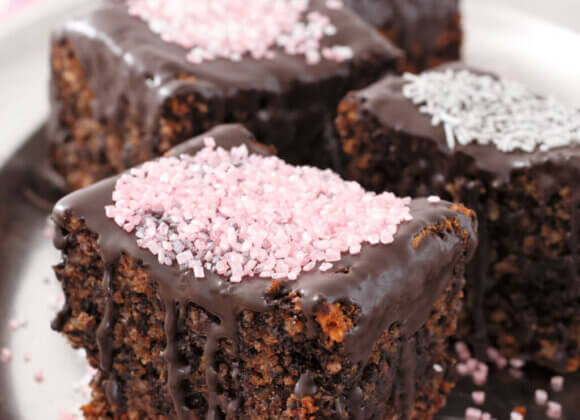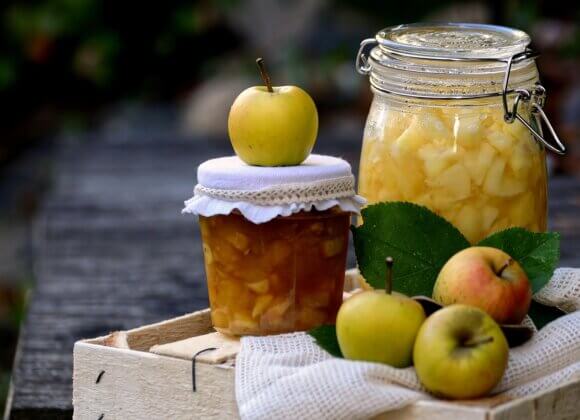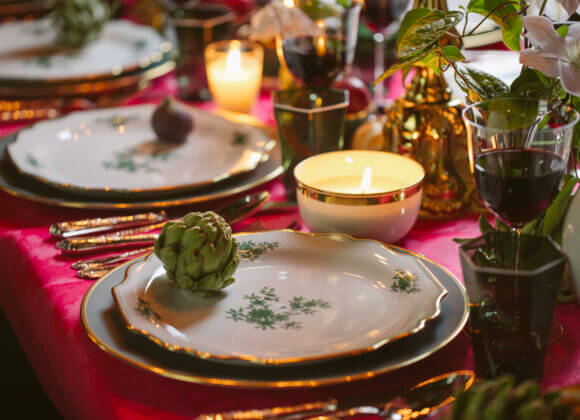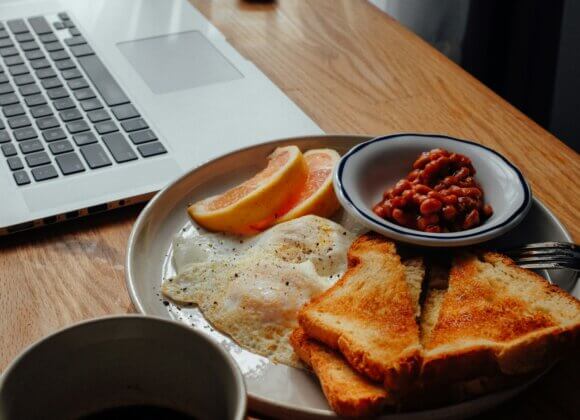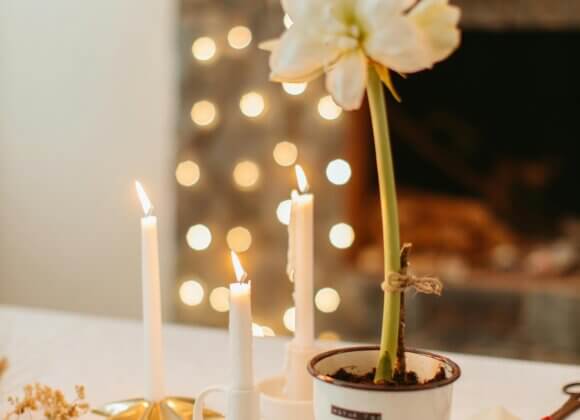Delicate, fruity, a small work of art – the fruit tart is the elegant star among summer desserts. But what should be included, what is better left out and does it always have to be gelatine?
The fruit tart (French: tarte aux fruits) originated in France, more precisely in rural cuisine, where surplus fruit was cleverly preserved or used fresh. The classic consists of a thin shortcrust pastry or sponge base filled with crème pâtissière – a dense, vanilla custard cream – and topped with fresh, seasonal fruit. Particularly popular in France: red berries, apricots, currants or plums.
From Paris, the tart conquered Swiss, German, Austrian and Italian bakeries, was reinterpreted by patisseries and is now an integral part of upscale dessert menus, picnics and summer cuisine in general.
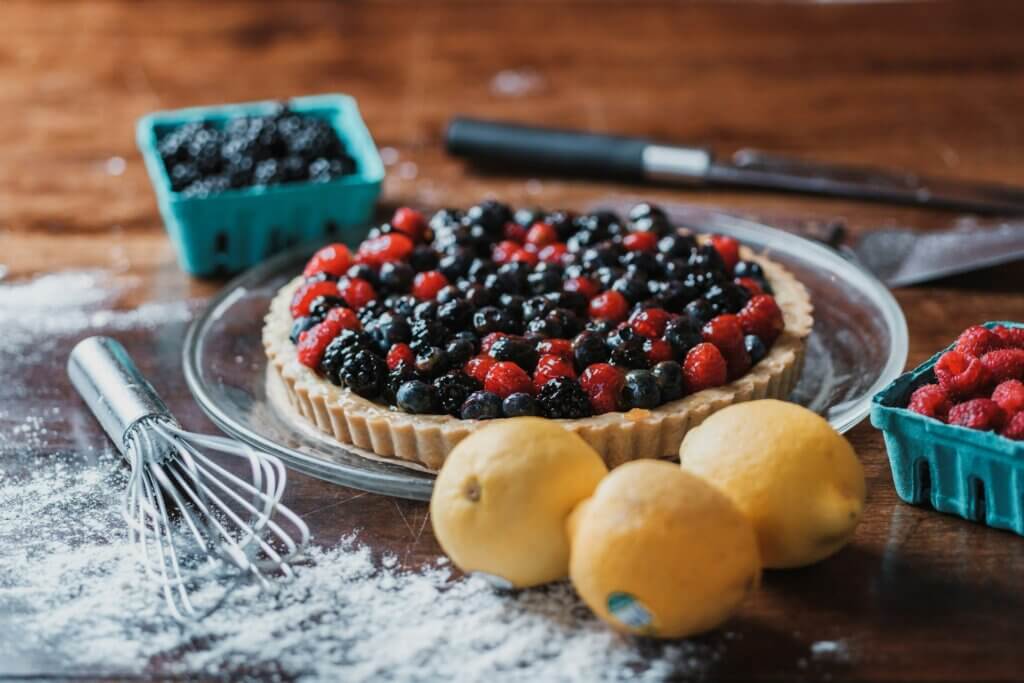
Which fruits are suitable for fruit tarts – and which are not?
The tart thrives on harmony – taste, texture and moisture must complement each other.
Perfectly suited:
- Berries (strawberries, raspberries, blueberries)
- Stone fruit (peaches, apricots, plums)
- Grapes, kiwi, pineapple (in moderation)
- Apples, pears (stewed)
Rather unsuitable:
- Watermelon (too much liquid)
- Banana (oxidizes quickly)
- Fresh mango or papaya (too slippery in consistency)
Tip: If you use fruit with a lot of juice, such as cherries or apricots, you should sauté them briefly or thicken them with starch – otherwise the cream or the base will become soggy.
Gelatine in fruit tarts – yes or no?
In many cases, the shiny layer on fruit tarts is cake jelly prepared with gelatine (or agar-agar). It not only provides a beautiful appearance, but also fixes the fruit and protects the cream underneath.
However, if the fruit is very dry or eaten quickly, you can safely leave it out. Vegetarian alternatives to gelatine are pectin, agar-agar or a simple syrup made from sugar water with lemon juice.
Sponge or shortcrust pastry – which goes better with fruit tarts?
The basis is a question of style:
- Shortcrust pastry (classic French): stable, nutty-buttery, stays crispy for longer. Ideal for moist crème or fruit.
- Sponge cake (Italian, light): airy, soft, but absorbs quickly. Tip: spread a thin layer of white chocolate or jam on top as a kind of moisture barrier.
If you like it particularly fine, combine crispy shortcrust pastry with a thin layer of sponge cake – a haute pâtisserie method.
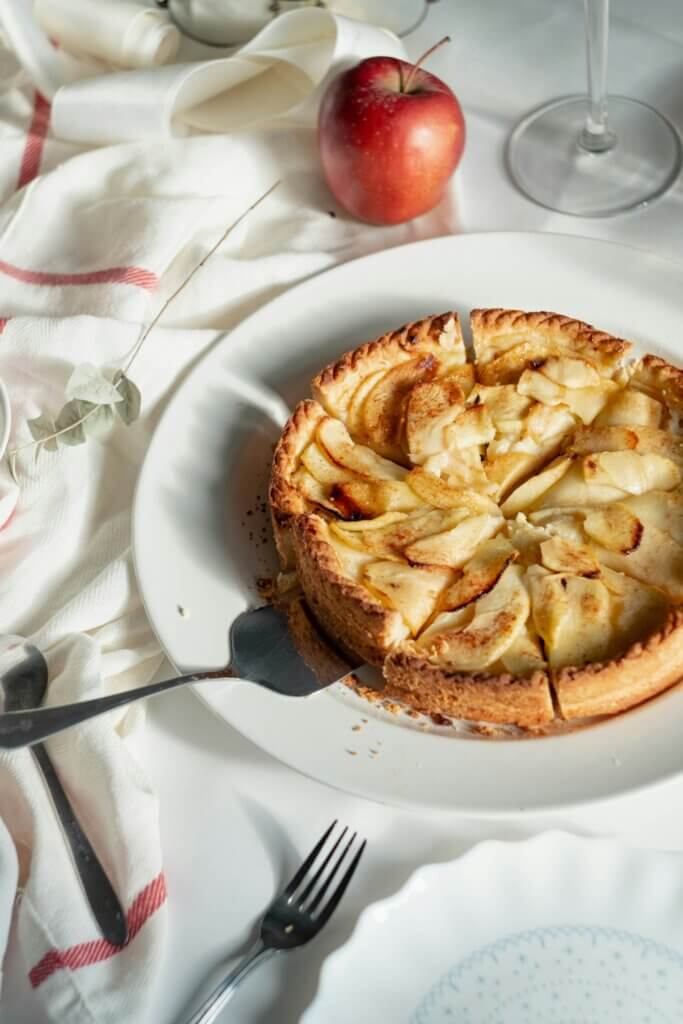
But we don’t just provide you with general knowledge about fruit tarts – we also have a few delicious French recipes to go with them:
Tarte aux Fraises with vanilla cream
Ingredients for 1 tart tin (26 cm):
- 200 g flour
- 100 g butter
- 50 g sugar
- 1 egg yolk
- 1-2 tablespoons cold water
Covering:
- 500 g strawberries
- 1 pkg cake jelly (clear)
Vanilla cream:
- 300 ml milk
- 2 egg yolks
- 30 g starch
- 40 g sugar
- 1 teaspoon vanilla paste
Preparation:
- Knead the shortcrust pastry, chill, blind bake (180 °C, 15 min).
- Cook the crème, leave to cool and spread over the cooled base.
- Cut the strawberries in half and place on top.
- Prepare the jelly according to the packet, leave to cool slightly and spread on the fruit.
Provençal apricot tart with lavender honey
Ingredients:
- 1 roll of puff pastry
- 8 ripe apricots
- 2 tbsp lavender honey
- 1 tbsp breadcrumbs
- 1 teaspoon thyme
Preparation:
- Place the puff pastry in the tin, sprinkle with breadcrumbs.
- Halve the apricots and spread out in a fan shape.
- Brush with honey and sprinkle with thyme.
- Bake at 200 °C for approx. 25-30 minutes.
No icing necessary – the fruit caramelizes heavenly!
Fruit tart aux myrtilles with yogurt cream (without gelatine)
Ingredients:
- 1 shortcrust pastry base (as above)
- 200 g natural yogurt (Greek)
- 100 g mascarpone
- 40 g sugar
- 1 organic lemon (zest)
- 250 g blueberries
Preparation:
- Prepare and bake the shortcrust pastry (see above)
- Stir the cream and spread over the cooled base.
- Sprinkle blueberries on top.
- Optional: drizzle with a little powdered sugar or lemon syrup.
Perfect for hot summer days – light, fresh, elegant.
Related posts:
Sweet summer happiness – 5 specialdesserts


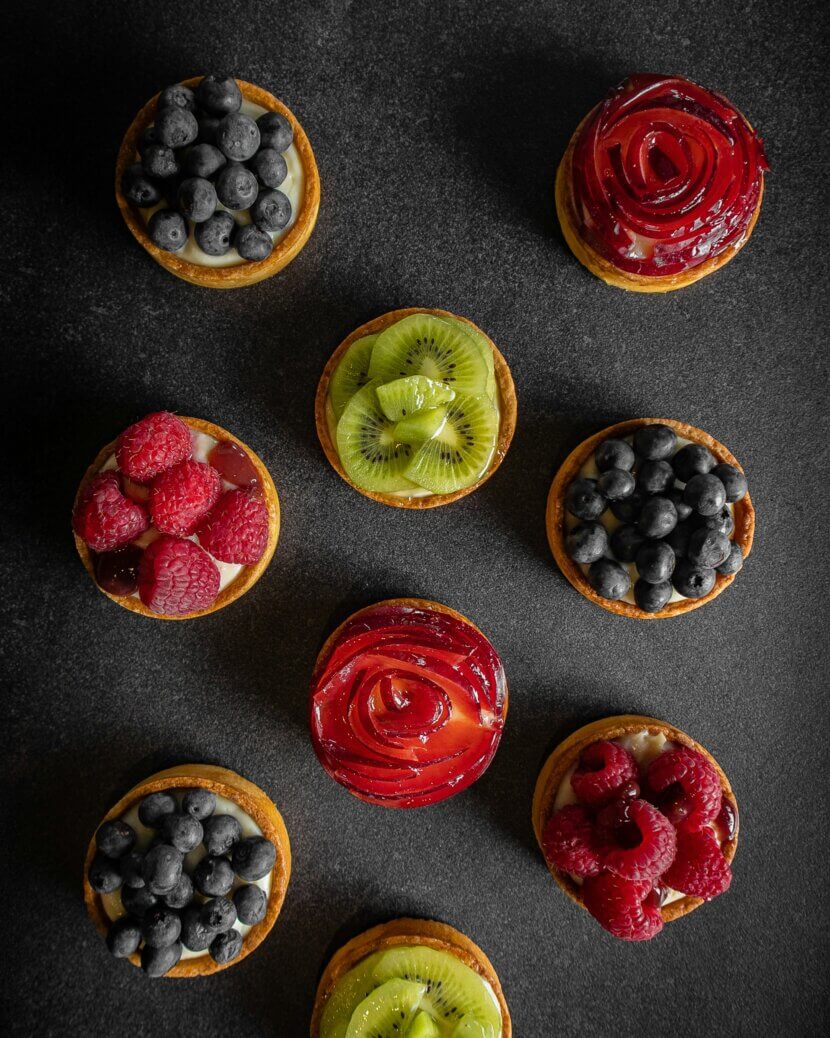
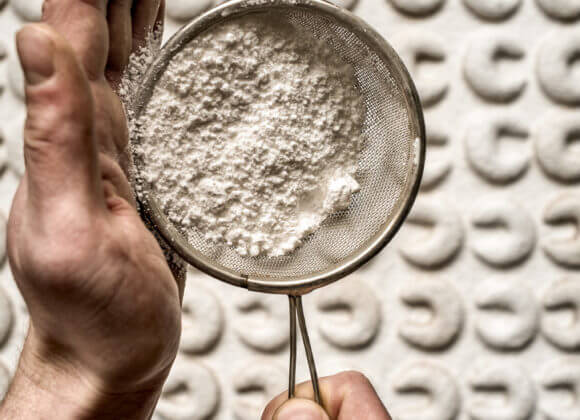
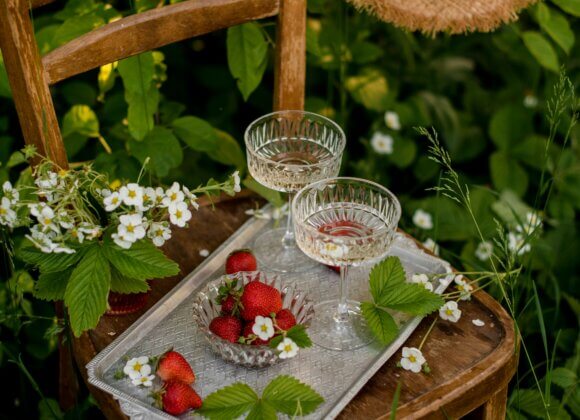

![Home cooking reloaded incl. competition Christoph_Krauli_Held©Monika_Loeff_19285[1]](https://myhome.at/wp-content/uploads/2025/09/Christoph_Krauli_Held©Monika_Loeff_192851-580x420.jpg)
